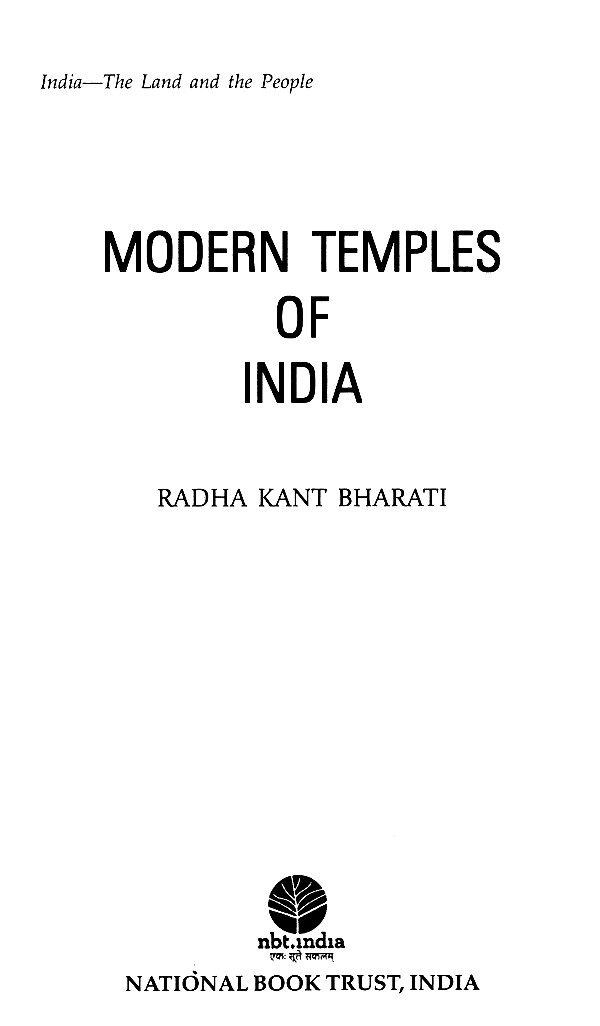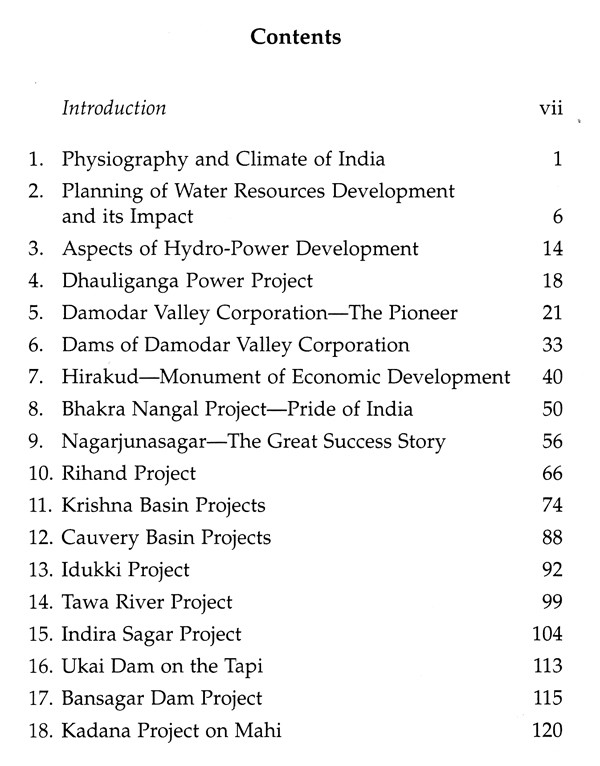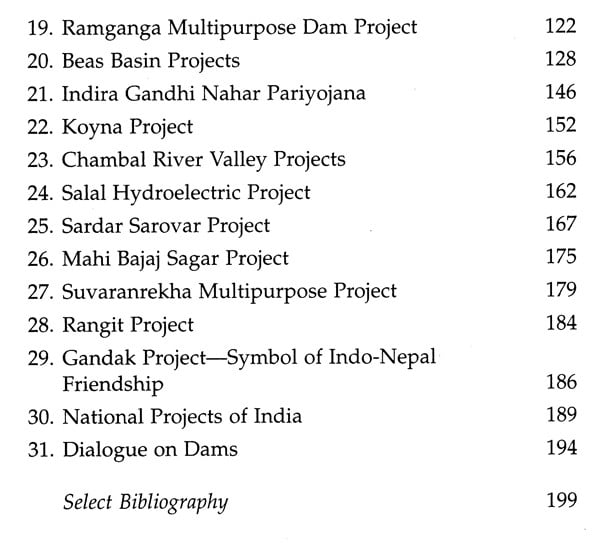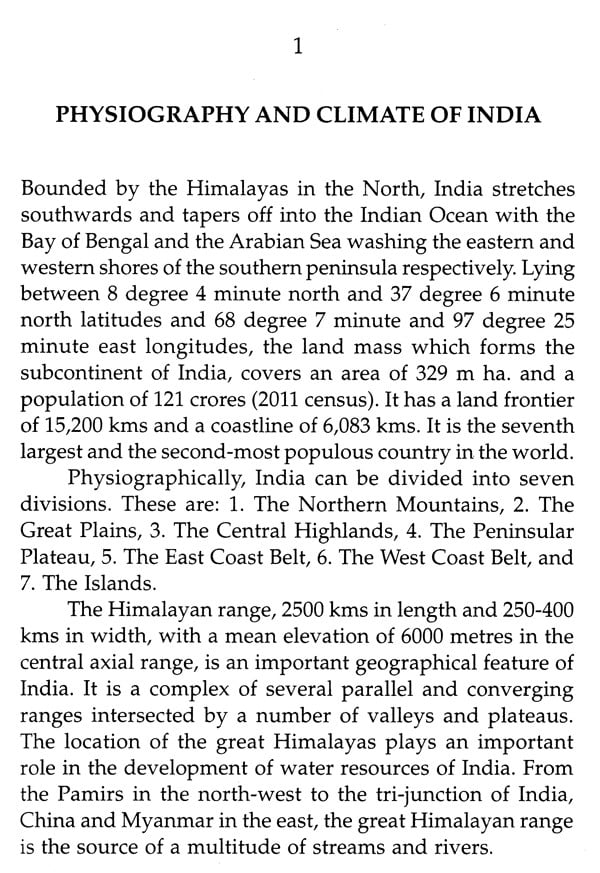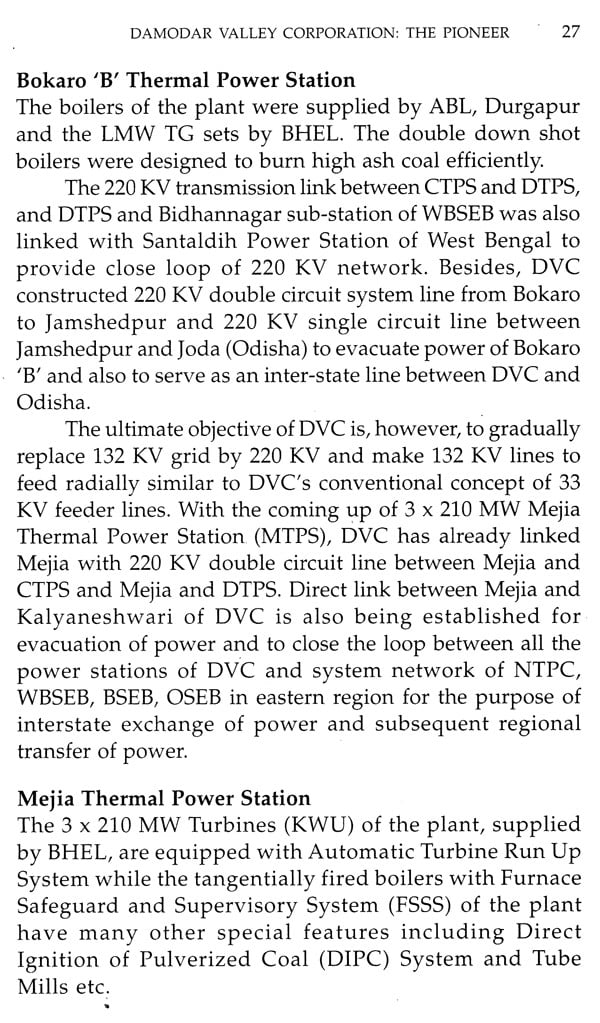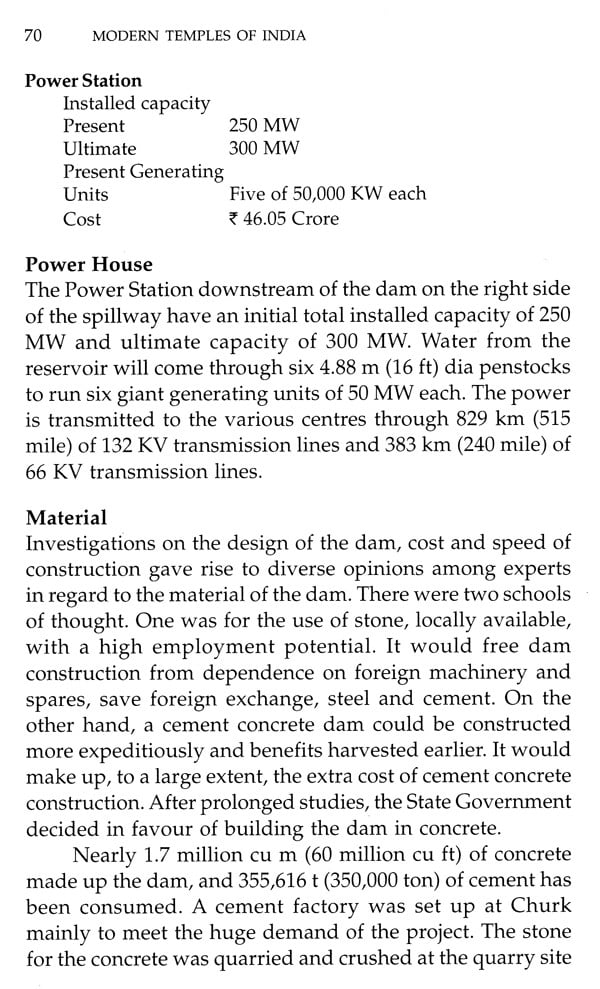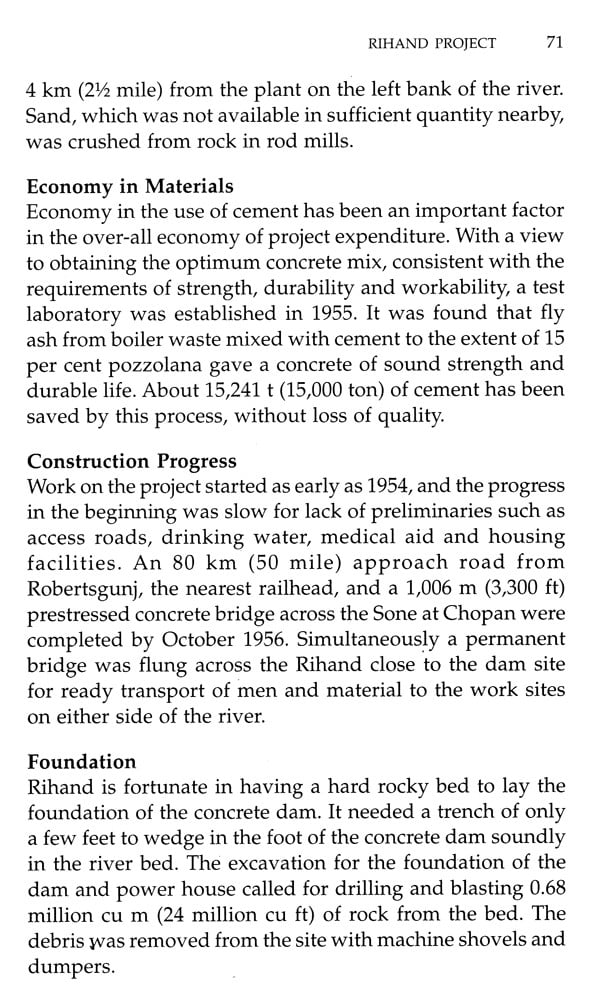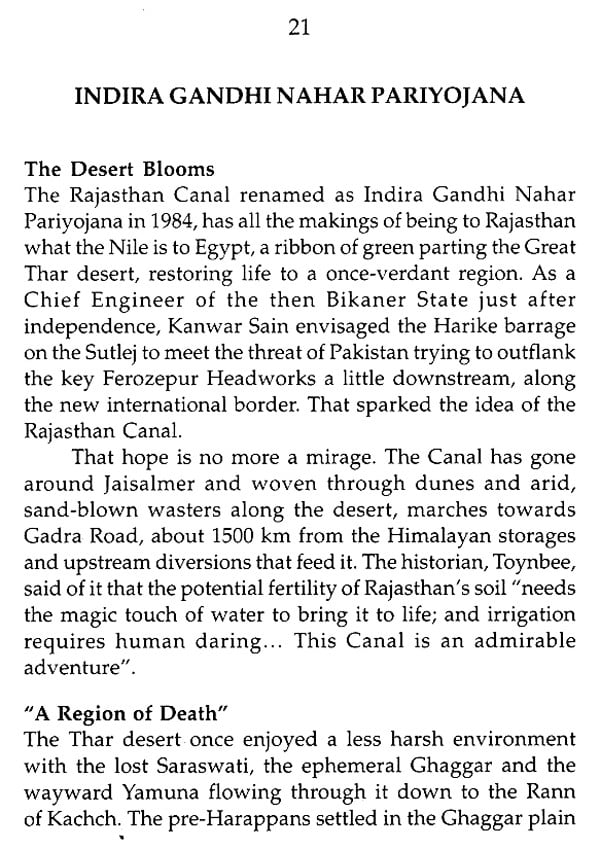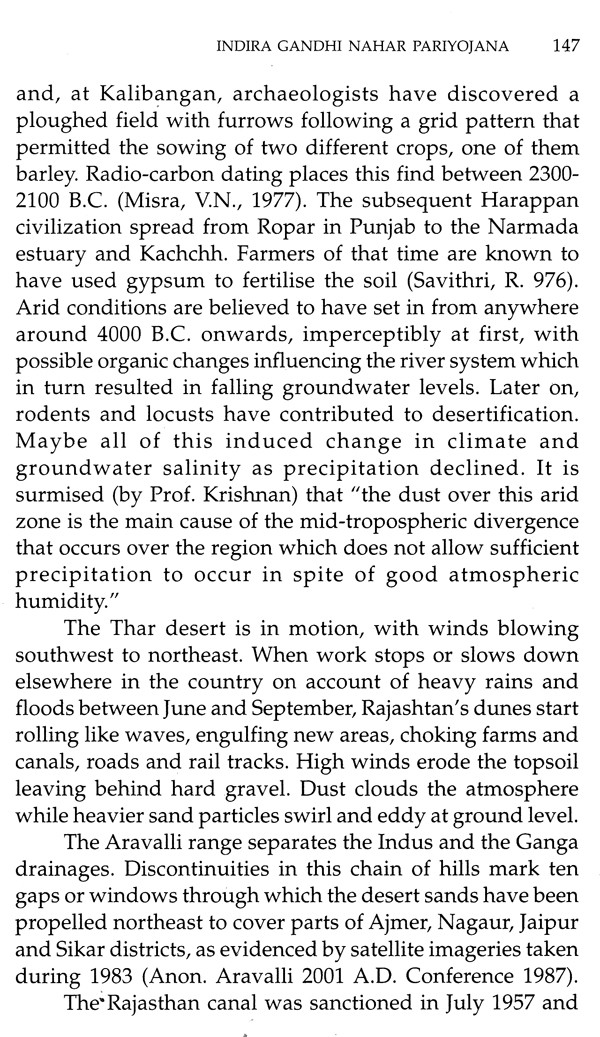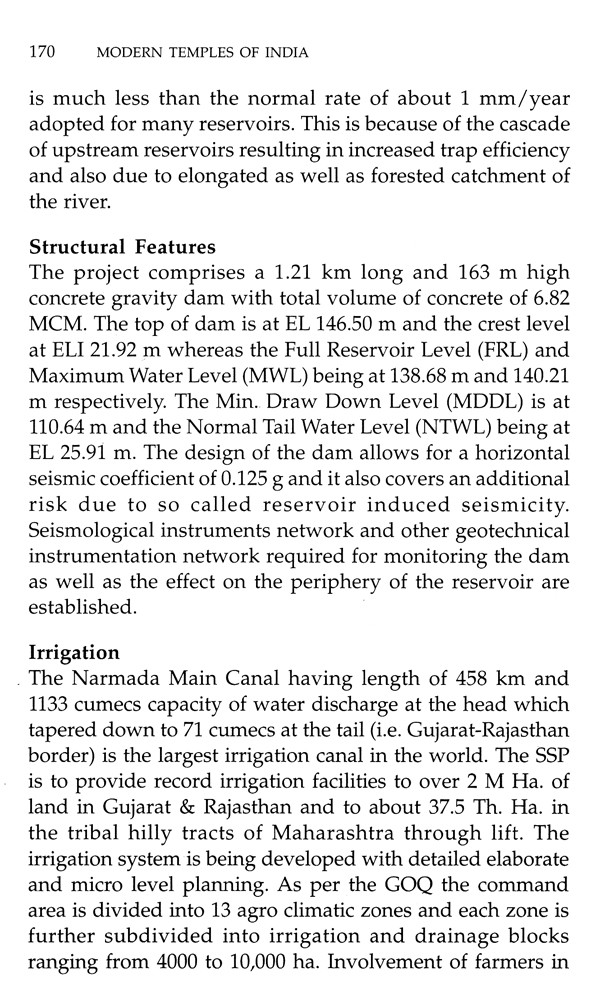
Modern Temples of India
Book Specification
| Item Code: | UAX215 |
| Author: | RADHA KANT BHARATI |
| Publisher: | National Book Trust, India |
| Language: | English |
| Edition: | 2014 |
| ISBN: | 9788123793399 |
| Pages: | 210 (Throughout Color Illustrations) |
| Cover: | PAPERBACK |
| Other Details | 8.50 X 5.50 inch |
| Weight | 310 gm |
Book Description
India is said to rank third in the world in dam building. The purpose of these dams chiefly has been to keep the floods in control as also to ensure proper water supply and generate hydroelectric power. These dams have also been called 'Modern Temples of India'. The present book is a detailed study of major embankments and its contribution to the progress of the country in general and the welfare of those living in neighbouring regions in particular. The last chapter however discusses the controversies surrounding these dams and its social, economic and environmental ill effects.
Radhakant Bharati (b. 1939) has been a serious scholar of Geography. He has written a very popular book Bharat ki Nadiyan in Hindi published by the National Book Trust, India which has also been translated into English. He has also edited Bhagirathi, a journal of water resources, for several years. He has to his credit a number of articles on geography, tourism, sociology etc published in reputed journals. Recently he has authored a book Interlinking of Indian Rivers.
Highlighting the importance of river valley projects for the country's development on the occasion of the inauguration of the Nagarjunasagar River Valley Project in Andhra Pradesh, the first Prime Minister of India Pt. Jawaharlal Nehru had said:
"This is a stepping stone for India's prosperity and symbol of the series of modern temples taken up."
His personal association and his speeches at foundation laying ceremonies or at inaugural functions of irrigation and power projects were manifestation of his keen interest in these activities.
It is a fact that even now India is predominantly an agricultural country depending on the south-west monsoon during the four months of the year for replenishment of flows in the river basins, which will have to be used judiciously to cater to various needs for the remaining period of the year. This warrants construction of reservoirs in order to store water during the monsoon months for use during the remaining period of the year to meet various needs. A chain of multipurpose reservoirs were constructed immediately after independence in various river basins, which has facilitated self-sufficiency in production of foodgrains.
"Water is the harbinger of prosperity"-is a popular saying. Therefore, various water resources projects taken up since independence have provided water for drinking, agricultural production, power generation, industrial development and promotion of tourism, etc.
In India, dams have been constructed since time immemorial to harness water for irrigation, meeting drinking needs, etc. The ancient scriptures mention guidelines for selection of good dam sites and the need for assessment of flows, etc. by engaging expert pandits (hydrologists). After independence, dam construction received a big thrust when a number of dams were taken up for construction across various rivers for harnessing water-resources for various needs. Actually, the modern concept of building high dams in our country was started in the middle of the last century with the initiative of Pandit Jawaharlal Nehru and Dr. K.L. Rao (then Union Minister of Irrigation and Power). More than 4500 dams have been constructed after independence which include Bhakra Nangal, D.V.C., Hirakud, Nagarjunasagar, etc. resulting in creation of storage capacity of about 225 BCM. This has helped banish famines, which were once the bane of the country.
In India, the average annual water resources availability has been assessed as 1869 billion cubic meter (BCM). It is estimated that owing to topographic, hydrological and other constraints, the utilizable water is 1123 BCM out of which 690 billion cubic meter is surface water and 433 BCM is replenishable groundwater. The average annual water availability may be considered to remain unchanged. Storage capacity of 225 billion cubic meter has been created so far. As per present assessment. the total estimated storage capacity of the various projects under construction is about 76 billion cubic meter.
**Contents and Sample Pages**
